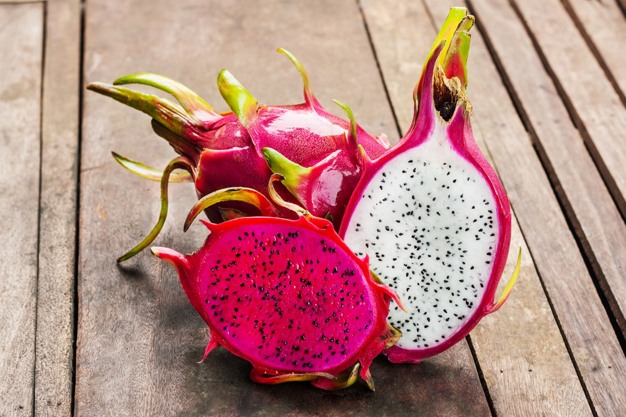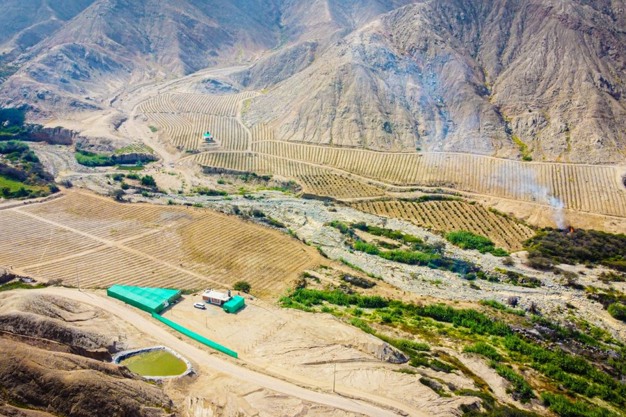Peru's dragon fruit, known locally as "pitahaya," is a vibrant tropical fruit with a promising future in the global market says Erika Acevedo Sarmiento, Investment Project Director of Agro Pacific Global Services SAC. This is a Peruvian company based in Lima-Peru, dedicated to the commercialization and promotion of agro-industrial products, primarily focusing on dragon fruit and avocado.

Erika Acevedo Sarmiento, Investment Project Director of Agro Pacific Global Services SAC
“While currently a smaller player compared to giants like Vietnam and Ecuador, Peru's dragon fruit industry boasts unique advantages and ambitious plans for growth,” states Acevedo. “The prices in Europe for Peruvian dragon fruit are around €2.50-€3.00 per kilogram, while US market entry could potentially command higher prices,” states Acevedo.
The farm sizes in Peru vary, with some large-scale operations exceeding 100 hectares, while many smaller family-run farms cultivate 5-10 hectares. In 2022, Peru produced approximately 15,000 tons of dragon fruit, a significant increase from the 5,000 tons in 2020 says Acevedo. Red dragon fruit, with white and red pulp, dominates but yellow varieties are also cultivated in smaller quantities.

“Currently Peruvian dragon fruit exports are primarily directed towards European markets like the Netherlands, Spain, and France. Smaller shipments reach Ecuador, Bolivia, and Colombia. The future potential depends on the recent agreement reached with the US Department of Agriculture, which opens the door for Peru to become a major supplier for this lucrative market, potentially starting in 2024.”
She says the demand for dragon fruit is steadily rising globally. “It is driven by its exotic appeal, nutritional value, and versatility in food and beverage products. Peru's high-quality, sustainably grown fruit is well-positioned to capitalize on this trend,” says Acevedo.
She lists the challenges and opportunities for Peru’s fledgling dragon fruit industry, starting with the key elements of logistics and infrastructure. “Efficient transportation and cold chain facilities are crucial for exporting perishable dragon fruit. Investments in these areas are essential for sustained growth. Marketing and branding, to build awareness and establish a distinct brand identity for Peruvian dragon fruit, will help differentiate it from competitors. Sustainability is also key. Adopting sustainable farming practices, such as water conservation and organic methods, will resonate with environmentally conscious consumers.”
Established in 2018, Agro Pacific is a 100% Peruvian-owned company with a focus on high-quality, sustainable agriculture. They offer a range of services that included the production and marketing of dragon fruit: “We cultivate and export red, with white and red pulp, dragon fruit varieties, and have plans to expand into other fruits. We provide expertise and support to farmers and investors in the agro-industrial sector through agricultural consultancy and project development, logistics and distribution by managing the transportation and delivery of their products to domestic and international markets. Our proprietary organic fertilizer, of mineral origin, will provide essential micronutrients for robust plant growth and exceptional fruit quality."

The Company has three main locations: an administrative office in Miraflores, Lima, Peru, a technical office located near the Callao Port and Airport and a production facility situated in Yauritambo, Ica, Peru, which is a major dragon fruit-growing region in the country, with an extension of 50 ha of avocado, says Acevedo.
Acevedo says “Peru has an ideal climate, skilled farmers, and growing export potential, the future of Peruvian dragon fruit appears bright. By addressing the challenges and capitalizing on the opportunities, Peru can become a major player in the global dragon fruit market, offering the world a taste of this prickly, yet delightful, tropical treasure.”
For more information:
Erika Acevedo
AgroPacificG&S
Tel: +51 957 183 587
Email: agropacificgssac@gmail.com
www.agropacificgssac.com
